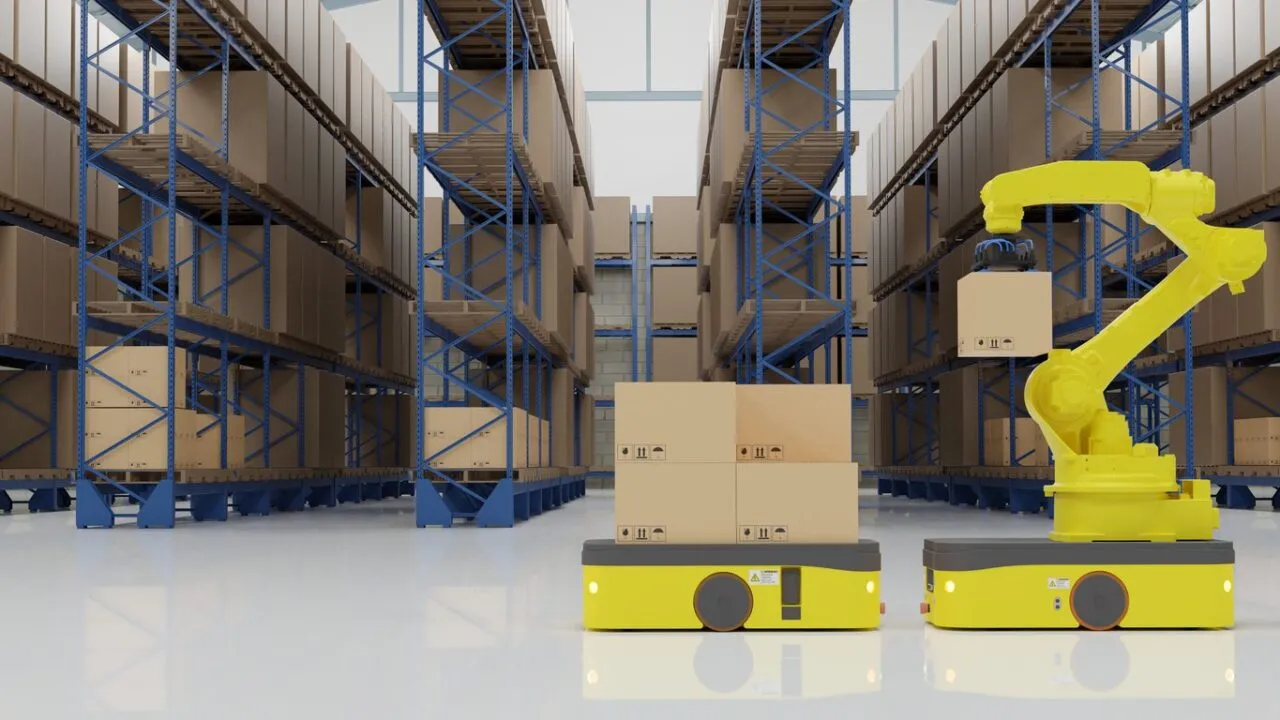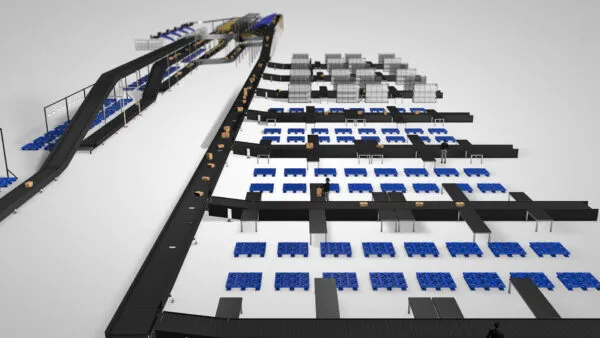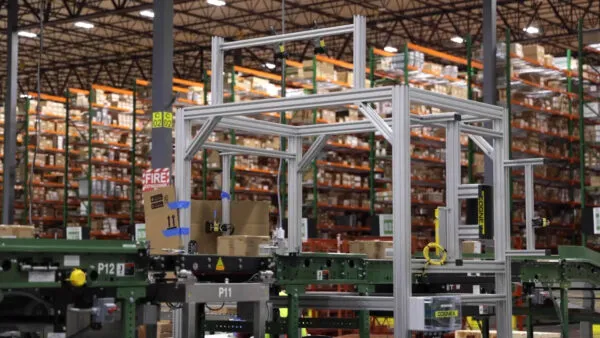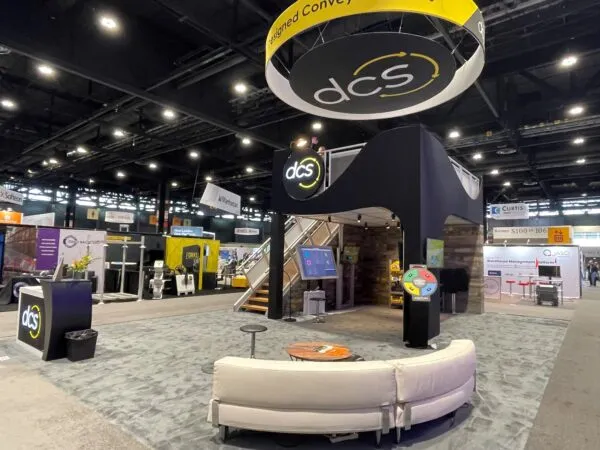This site is protected by reCAPTCHA and the Google Privacy Policy and Terms of Service apply.
Freeing Your Facility from Outdated Software and Controls: How to Modernize Without Downtime

By Justin Ray, Account Executive, Designed Conveyor Systems
Aging warehouse software and control systems can quietly become the biggest source of inefficiency in a distribution operation. As business needs evolve, these systems often can’t keep up with new modern warehouse technologies, expanded inventory, or changing order profiles. Yet shutting down the operation for weeks to replace them is rarely an option.
Compounding the challenge, many facilities today are running on original equipment manufacturer (OEM)-supplied systems that are no longer supported. Industry consolidation has led to discontinued product lines, merged software platforms, and the loss of legacy support resources. For operations built on proprietary architectures, even simple updates can require costly workarounds—or worse, complete system replacement. These factors are driving many companies to take proactive control of their modernization strategies rather than waiting for an unexpected failure to force change and risking catastrophic unplanned downtime.
At Designed Conveyor Systems (DCS), clients overcome that challenge through software and controls modernization projects designed to minimize risk, cost, and downtime. Every upgrade follows a structured approach that balances technical precision with operational continuity. This ensures facilities stay productive while moving toward a smarter, more connected future.
A key enabler of this transformation is DATUM, DCS’ proprietary warehouse execution system (WES). DATUM serves as the intelligence layer between warehouse management software and automation equipment—providing real-time visibility, control, and orchestration. When integrated during modernization, DATUM serves as integral warehouse modernization software, extending the value of existing systems and creates a scalable foundation for future automation. It also provides immediate performance benefits, such as faster diagnostics and improved data flow.
Here’s how the DCS team makes modernization possible—with minimal disruption.
Step 1: Understanding the Starting Point
Every modernization effort begins with discovery. DCS engineers assess the current software and controls environment, identifying what’s working, what’s outdated, and what dependencies exist between systems. That includes mapping programmable logic controller (PLC) platforms, human-machine interfaces (HMI), middleware, and device networks. It also incorporates a thorough review of how the existing warehouse control system (WCS) and software integrates with other technologies.
Simultaneously, the DCS team works to understand each client’s operational priorities. The goal might be to replace obsolete hardware, modernize legacy software, improve data visibility, or integrate with enterprise platforms. When appropriate, DCS evaluates how DATUM can overlay or extend existing software infrastructure to deliver greater flexibility and insight.
Step 2: Building a Complete Picture
Once discovery is complete, DCS’s software and controls experts map out every connected system. From the conveyor control network to scanners, sensors, and host software interfaces, no stone is left unturned. This detailed analysis helps determine how to transition safely without interrupting critical functions.
The DCS team also reviews all available documentation, wiring diagrams, and program backups to confirm compatibility. In older facilities, this information may be incomplete or missing, which is why DCS emphasizes rebuilding accurate documentation early in the process.
When DCS implements DATUM as part of the modernization plan, this mapping ensures seamless integration with both legacy and new control logic. DATUM’s microservice architecture allows it to communicate with different systems and device protocols, creating a unified view of warehouse performance.
Step 3: Designing for a Seamless Transition
The design phase focuses on creating an updated warehouse optimization software and controls architecture that supports future growth while allowing phased implementation. DCS engineers develop detailed cutover plans that define exactly how each new software module, PLC, or HMI will be deployed, tested, and integrated without shutting down operations.
DATUM often plays a key role in this phase by serving as the coordination layer between systems. It allows DCS to standardize data flow and device communication, simplifying integration as older components are replaced.
The goal is always to modernize in motion. Sequenced installation allows production lines to remain active while individual control panels, programs, or software subsystems are upgraded one at a time. In many cases, DCS engineers simulate new logic and software interfaces in a virtual test environment before deploying them live.
Step 4: Collaborating Across Engineering and Operations
Successful software and controls modernization requires close coordination between DCS and the client’s operations team. Throughout the project, DCS holds regular review meetings to confirm alignment on scope, schedule, and risk management.
Software engineers collaborate with mechanical, information technology (IT), and operations stakeholders to ensure smooth integration with existing material handling systems, warehouse management system (WMS) platforms, and enterprise software infrastructure. When DATUM is introduced, these discussions include system configuration workshops that align operational logic and business rules with real-time execution.
This cross-functional communication prevents downtime and eliminates surprises once new systems go live. The DCS team prioritizes keeping all parties informed and aligned at every step.
Step 5: Testing Before Transition
Before any cutover, DCS thoroughly tests every new software interface, control function, and communication point in a staging environment. Engineers validate device input/outputs (I/Os), motor controls, and system logic, as well as data communication through DATUM to confirm seamless interaction with host systems.
Testing often includes simulations of real-world scenarios—such as fault recovery, product jams, or power interruptions—to confirm the system’s response. Once validated, the same tests are repeated during commissioning to verify performance under live conditions. DCS meticulously designs the testing process to eliminate both surprises and unplanned downtime.
Step 6: Phased Implementation Without Downtime
When it’s time to implement the new system, DCS deploys modern warehouse technology work in controlled phases, often during off-hours or between shifts. Each segment of the software and controls system is upgraded, tested, and released back to production before moving on to the next.
This phased approach allows facilities to remain active throughout the project. When DATUM is part of the solution, it provides connectivity with both old and new equipment simultaneously, allowing DCS engineers to monitor progress and performance across the transition.
In many cases, DCS clients see immediate performance benefits even before the full migration is complete—such as faster diagnostics, improved visibility, and more reliable data flow between software and hardware layers.
Step 7: Empowering the Client for the Long Term
After modernization is complete, DCS provides comprehensive documentation, training, and post-implementation support. Deliverables include as-built electrical drawings, updated PLC and HMI programs, refreshed software configuration files, and a complete library of system logic.
When DATUM is implemented, DCS customizes dashboards and reporting tools for each operation. This gives clients visibility into throughput, downtime events, and equipment performance across the facility.
The DCS team also trains in-house maintenance and operations personnel to navigate the new software and controls environment confidently. As a result, the operations team experiences faster diagnostics and more effective decision-making. This long-term support ensures that the integration of modern warehouse technology isn’t just an upgrade, but a lasting operational improvement that prevents future vulnerabilities.
The Result: Modernization Without the Disruption
With the right planning, modernization doesn’t have to mean downtime. DCS combines deep software and controls expertise with its proven DATUM WES to help facilities upgrade legacy systems while staying fully operational. The result? A modernized warehouse that’s more intelligent, visible, and ready for the future—without the disruption.
Ready to modernize your software and controls systems without disrupting production?
Contact Designed Conveyor Systems to learn how DCS’s software and controls team—and DATUM—can help plan your next upgrade with confidence. Connect with us to start your systems modernization project today.














